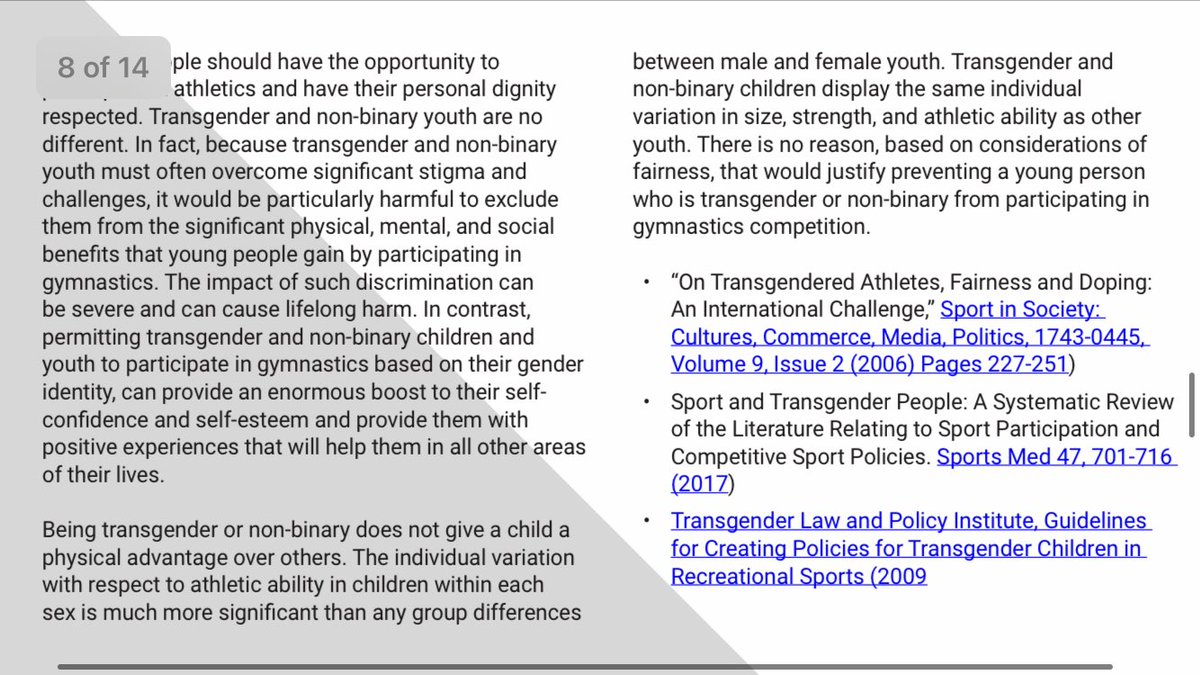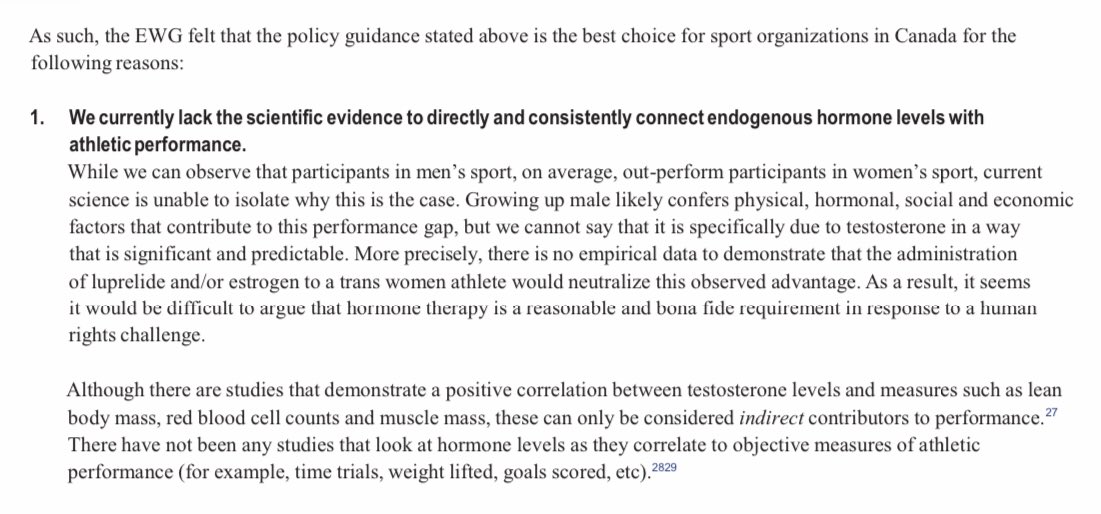
"The reality is that putting male- and female-bodied athletes together is co-ed or open sport. And in open sport, females lose."
washingtonpost.com/opinions/pass-…
washingtonpost.com/opinions/pass-…
"The evidence is unequivocal that starting in puberty, in every sport except sailing, shooting and riding, there will always be significant numbers of boys and men who would beat the best girls and women in head-to-head competition."
(I'm not sure I agree with those exceptions; watch sailing and tell me strength doesn't matter.... but anyway)
"They say that it’s time to shift our focus from supporting female-bodied athletes for whom Title IX has already done a lot of work, to supporting transgender women and girls who need our help more."
"Even if the legislation results in some females being displaced from the podium, they say, it’s enough that they get to participate."
"We are personally concerned that this requirement insufficiently accounts for the sex-linked physiological advantages that drive male dominance and the performance gap. We will continue respectfully to press this point."
Hear hear.
Hear hear.
"Sport is an unusual if not unique institution. It is a public space where the relevance of sex is undeniable, and where pretending that it is irrelevant, as the Equality Act suggests, will cause the very harm Title IX was enacted to address."
Thank you @Martina @SanyaRichiRoss and Doriane Coleman (who I don't think is one Twitter).
I can't believe I missed this at the time.
I can't believe I missed this at the time.
• • •
Missing some Tweet in this thread? You can try to
force a refresh






